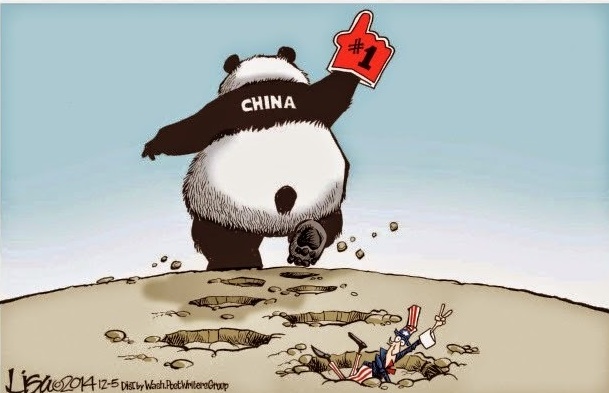Zhang Jun writes At a forum in Canberra last year, Andrew Sheng quipped, “China is transparent, but only in the Chinese sense.” The statement provoked laughter among those who view China’s decision-making processes as opaque; but it was laughter born of the recognition that Sheng was right. In the run-up to a major policy decision in China, editorials by high-ranking authorities in major publications, as well as reports and communiqués from official forums and meetings, almost always provide clues about what will happen. You just have to know how to read them.
Many interpreted last August as a last ditch effort by the People’s Bank of China (PBOC) to stave off an economic crash. But China is not really on the verge of a currency crisis at all. Given that all of this activity is taking place in the offshore renminbi market, which is small in scale and has only limited connections to mainland China’s financial system – the result of China’s hesitancy about financial-market liberalization and capital-account convertibility – the situation remains controllable. Add to that China’s other strengths – annual GDP of over $10 trillion, a growth rate at least four percentage points higher than the global average, $3 trillion in foreign-exchange reserves, a savings rate of 40% of GDP, and a massive trade surplus – and an exchange-rate crisis seems highly unlikely.
But that does not mean that there are no risks. On the contrary, China has a strong interest in curbing the volatility – and, given China’s centrality to the global economy, so does the rest of the world. The key will be to get markets and policymakers on the same page.
Chinese policymakers have shown a clear commitment to minimizing government intervention and promoting a market-oriented approach for setting interest and exchange rates. And the authorities have made significant progress toward this end.
In fact, the devaluation last August was accompanied by the announcement of a more market-oriented mechanism for setting the renminbi’s exchange rate in the interbank market, with the daily fixing rate based on the previous day’s closing price. That move, was a prerequisite for the addition of the renminbi to the basket of currencies that determine the value of the International Monetary Fund’s reserve asset, the Special Drawing Right.
But even when China attempted to create a more reliably market-based system, investors’ responses were skewed, with unfounded expectations of a substantial and consistent devaluation fueling speculation in international markets. The subsequent attempt by China’s State Administration of Foreign Exchange to stabilize expectations by declaring that the renminbi would be valued against an undisclosed basket of currencies, instead of just the US dollar, failed to convince them. Short trades continued to rage offshore, putting the renminbi under increasing pressure.
The PBOC has been working vigorously to prevent further misunderstandings by designing policies that will safeguard exchange-rate stability, while taking care not to transmit any signal that monetary easing is in the cards.
The PBOC clearly remains committed to stabilizing the exchange rate, while advancing its market-oriented goals.
China’s leaders have plenty of challenges ahead, and improved communication with markets could help to overcome them. Fortunately, it seems that China’s leaders recognize this imperative, and are working to meet it.

